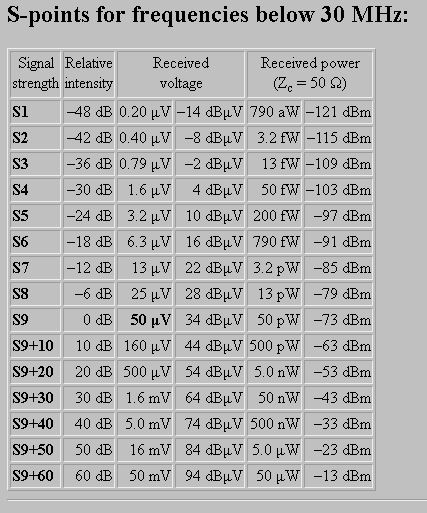
S-meter and signal strength
The S-meter is an instrument present on the majority of radio receivers that measures the strength of the signal that is being received, and uses a special unit: the S-point. S-points are often used for RST reports.
S-points go from S1 to S9 and each S-point is defined as a 6 dB change in signal strength. This means that each time the voltage is halved (–6 dB) the signal strength decreases by one point. S9 is already a very strong signal, but to describe larger signals, steps of 10 dB are used instead of 6 dB, noted “S9+20” meaning 20 dB above S9.
Today two reference values exist: for frequencies below 30 MHz, S9 is defined as a voltage of 50 μV over 50 Ω at the receiver antenna connector; for frequencies above 30 MHz, S9 is defined as a voltage of 5 μV over 50 Ω at the receiver antenna connector. This refers to an unmodulated carrier signal (N0N) that uses almost no bandwidth; in case of real signals using a given bandwidth, this definition may not be enough since a smaller receiver bandwidth allows a weaker minimum detectable signal, but S-points are still a good tool for comparing received signals.
“Keep High Spirit For New Entity”
